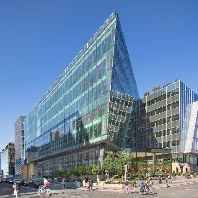Demand for office space in the European market has been hampered by a lack of good quality supply in the first quarter of 2016, according to the Savills European Offices Market report, with most cities unlikely to feel the impact of a projected 22% rebound in development activity.
Total take-up for office space in Europe reached 1.75m m² in the first quarter of 2016 which is almost the same figure registered for the same period last year. Limited office development combined with a strong level of take-up has dried up supply across most cities with only three exceptions: Poland (up 180 bps qoq), Copenhagen (20 bps) and London West End (10 bps). Office take-up in the first quarter was increasingly being driven by business expansion, which explains the growing demand for small and medium-sized office floor space in various cities.
Since development completions dropped by 16% in 2015 and letting activity over the past 12 months has remained dynamic, the level of supply has continued to decrease rapidly. Based on the overall office pipeline there is an anticipated rebound of development activity of 22% by the end of the year, creating approximately 2.7million m2 of office space. This represents about 42% of the average five-year take-up across Europe, but it is unlikely to make an impact on the majority of markets. With the exception of Warsaw and Brussels, many projects are already pre-let, up to 63% in Berlin, and it is expected that vacancy rates will either decline or remain stable rather than see growth. The average vacancy rate across European cities is at its lowest in seven years, dropping from 8.4% in Q4 2015 to 8.1% in Q1 2016.
According to Savills, rental growth is expected in 92% of European markets, and as development completions increase, upward pressure on prime rents will ease. Prime CBD rents grew an average of 4.9% yoy, up from the 3.4% growth recorded in the first quarter of 2015. In the past 12 months the overall amount of incentives granted to tenants reduced significantly, now representing 7.7% of the total lease period from 10% last year. In view of the supply shortage some tenants are tending to sign longer leases, especially if they can negotiate a better rent.
In non-CBD locations prime rents also increased by 2.9% yoy on average, but this was lower than in CBD locations and less than last year. Savills says that this is somewhat surprising given the demand for city locations, but it is likely that there is no true motivation for Grade B locations and as such occupiers are not willing to pay high rents.
Lydia Brissy, Savills European research director, comments:
“In spite of the high level of development completions expected this year, we predict that average vacancy rates will go down or remain stable in 71% of the European markets we monitor. The new supply planned will be easily absorbed by continuing strong demand, and with the level of office pipeline planned for 2017 currently 9% down on 2016 levels, this under-supply is expected to continue for the foreseeable future.
Source: Savills















